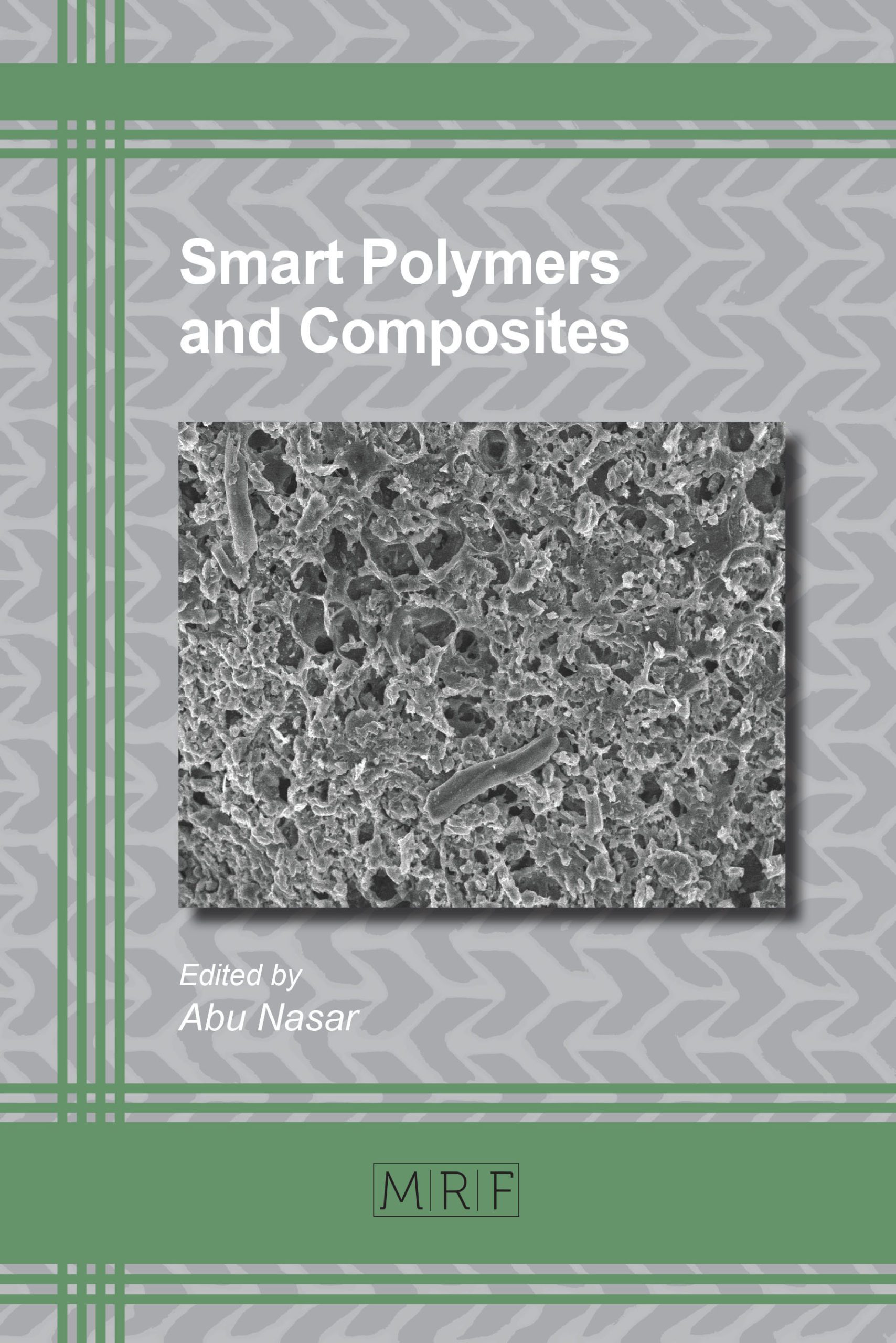Polymeric Membranes and Composites-Innovations, Regulatory Guidelines, Developments for Pollution Control and Environmental Sustainability
V.P.Sharma
The demand for biocomposites is increasing multifold due to concerns towards environment sustainability and specific features. The basic raw material and additives may remain separate or intermixed through weak bonding. They are generally made up of reinforcing components, fillers, adhesives and matrix which may vary from product to product. The application and demand of composites have been increasing for the fast advancing industries. Innovative and smart composite materials are being designed that have one or more properties that may be significantly changed in a controlled fashion through external stimuli’s. Preferences towards utilization of fibers from natural products in composites are also increasing for environmental sustainability. Moreover, the role of nanocomposites and opportunities for composite-metal hybrid materials are critical and needs due care. The functionality with innovation using renewable feedstock are being developed using green polymeric sustainable additives to offer tailor-made, innovative and market-ready polymer solutions. Several natural fiber based composites are rendering help to transform the auto industry by replacing many petroleum-based components. Innovative materials are being developed using functional polymers so that volatile substances may be handled safely. This may help to bind substances and spread without endangering environment or biodiversity. Packaging segment including personal care, pharmaceuticals, food products, water etc. are likely to witness high growth in the future with the lifestyle changes in our society. The continuous monitoring and safety assessment in view of OECD/ ISO norms and specifications, updating as per the National/International guidelines are required periodically to match the state-of-the-art developments.
Keywords
Polymers, Composites, Regulatory, Improvements, Risk Management
Published online 1/2/2018, 15 pages
DOI: http://dx.doi.org/10.21741/9781945291470-6
Part of Smart Polymers and Composites
References
[1] M. Cole, P. Lindeque, C. Halsband, T.S. Galloway, Microplastics as contaminants in the marine environment: a review, Mar. Pollut. Bull., 62 (2011) 2588-2597. https://doi.org/10.1016/j.marpolbul.2011.09.025
[2] D. Depan, Biodegradable polymeric nanocomposites- advances in biomedical applications, CRC publication, 2016. ISSN 13-978-1-4822-6051-9.
[3] FICCI report Proc 2nd, National Conference on Plastic Packaging-The Sustainable Future; A report on Plastic Industry; January (2016).
[4] S. Ghorai, A. Sinhamahpatra, A. Sarkar, A.B. Panda, S. Pal, Novel biodegradable nanocomposite based on XG-g-PAM/SiO2: application of an efficient adsorbent for Pb2+ ions from aqueous solution, Bioresour. Technol., 119 (2012) 181-190. https://doi.org/10.1016/j.biortech.2012.05.063
[5] H.J. Endres Bioplastics, Adv. Biochem. Eng. Biotechnol., 2017 Apr 4.
[6] J. Hammer, M.H.S. Kraak, J.R. Parsons, Plastics in the marine environment: the dark side of a modern gift, Rev. Environ. Contam. Toxicol. 220 (2012) 1-44. https://doi.org/10.1007/978-1-4614-3414-6_1
[7] H.M. Koch, A.M. Calafat, Human body burdens of chemicals used in plastic manufacture, Phil. Trans. R Soc. B, 364 (2009) 2063-2078.
[8] K. Kan-Dapaah, N. Rahbar N, W. Soboyejo; Polymeric composite devices for localized treatment of early-stage breast cancer; PLoSOne, 12 (2017) 1-11. https://doi.org/10.1371/journal.pone.0172542
[9] K. Kan-Dapaah, N. Rahbar, A. Tahlil A, D. Crosson, N. Yao, W. Soboyejo W; Mechanical and hyperthermic properties of magnetic nanocomposites for biomedical applications, Mech. Behav. Biomed. Mater. 49 (2015) 118-128. https://doi.org/10.1016/j.jmbbm.2015.04.023
[10] Layth Mohammed, M. N. M. Ansari Grace Pua, Mohammad Jawaid, and M. Saiful Islam A Review on Natural Fiber Reinforced Polymer Composite and Its Applications; International Journal of Polymer Science; Article ID 243947, 2015 (2015) 1-15.
[11] M. Marcos-García, P. García-Fraile, A. Filipová, E. Menéndez, P.F. Mateos, E. Velázquez, T. Cajthaml, R. Rivas, Mesorhizobium bacterial strains isolated from the legume Lotus corniculatus are an alternative source for the production of Polyhydoxyalkanoates to obtain bioplastics. Environ Sci Pollut Res Int., (2017) Jun 7.
[12] M. Scavone,, I. Armentano , E. Fortunati , F. Cristofaro, S. Mattioli, L. Torre, J. M. Kenny, M. Imbriani, C.R. Arciola, L. Visai, Antimicrobial properties and cyto-compatibility of PLGA/Ag nanocomposites materials, 9 (2016) 1-15.
[13] C.J. Moore, Synthetic polymers in the marine environment: a rapidly increasing, long-term threat, Environ. Res. 108 (2008) 131-139. https://doi.org/10.1016/j.envres.2008.07.025
[14] N. Uddin, Ed., Developments in Fiber-Reinforced Polymer Composites for Civil Engineering, Elsevier, 2013, ISBN: 9780857092342. https://doi.org/10.1533/9780857098955
[15] Naoji Matsuhisa, Daishi Inoue, Peter Zalar, Hanbit Jin,Yorishige Matsuba, Akira Itoh, Tomoyuki Yokota, Daisuke Hashizume and Takao Someya, Printable elastic conductors by in situ formation of silver nanoparticles from silver flakes, Nature Materials, 2017. https://doi.org/10.1038/nmat4904
[16] M.S. Muhamad, M.R.,Salim, W.J.,Lau, Z.Yusop, A review on bisphenol A occurrences, health effects and treatment process via membrane technology for drinking water (2016), Environ. Sci. Pollut. Res., 23 (2016) 11549-11567. https://doi.org/10.1007/s11356-016-6357-2
[17] P. Pavani and T Raja Rajeswari Impact of Plastics on Environmental Pollution, Proc. “National Seminar on Impact of Toxic Metals, Minerals and Solvents leading to environmental Pollution – 2014” J. Chem. Pharm. Sci. 3 (2014) 87-93.
[18] T. Zhang, W. Wang, D. Zhang, X. Zhang, Y. Ma, Y. Zhou, L.Qi, Biotemplated synthesis of gold nanoparticles-bacteria cellulose nanofibers nanocomposites and their application in biosensing, Adv. Funct. Mater., 20 (2010)1152-1160. https://doi.org/10.1002/adfm.200902104
[19] Urbini G, Internationalization, education and technological innovation: three key factors to improve the quality of the environment and public health, Rev. Ambient. Água, 10 (2015) 1-8.
[20] V.A Cataldo, G. Cavallaro, G. Lazzara, S. Milito, F Parisi, Coffee grounds as filler for pectin: Green Composites with Competitive performances dependent on the UV irradiation, Carbohyd. Polym. 170 (2017) 198-205. https://doi.org/10.1016/j.carbpol.2017.04.092
[21] Z. Ding, C. Yuan, X. Peng, T. Wang, H.J. Qi, M.L. Dunn; Direct 4D printing via active composite materials, Sci Advances, 3 (2017) 1-6. https://doi.org/10.1126/sciadv.1602890































